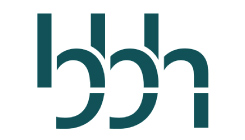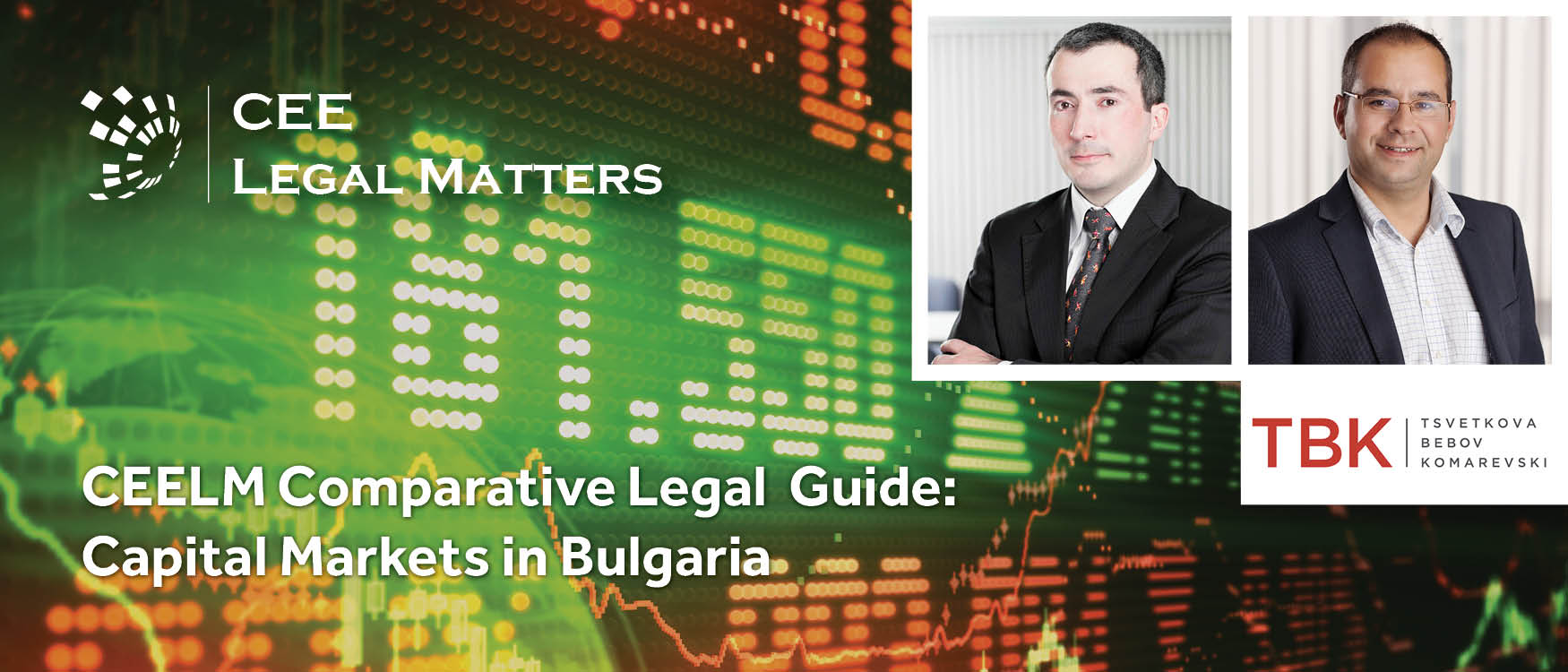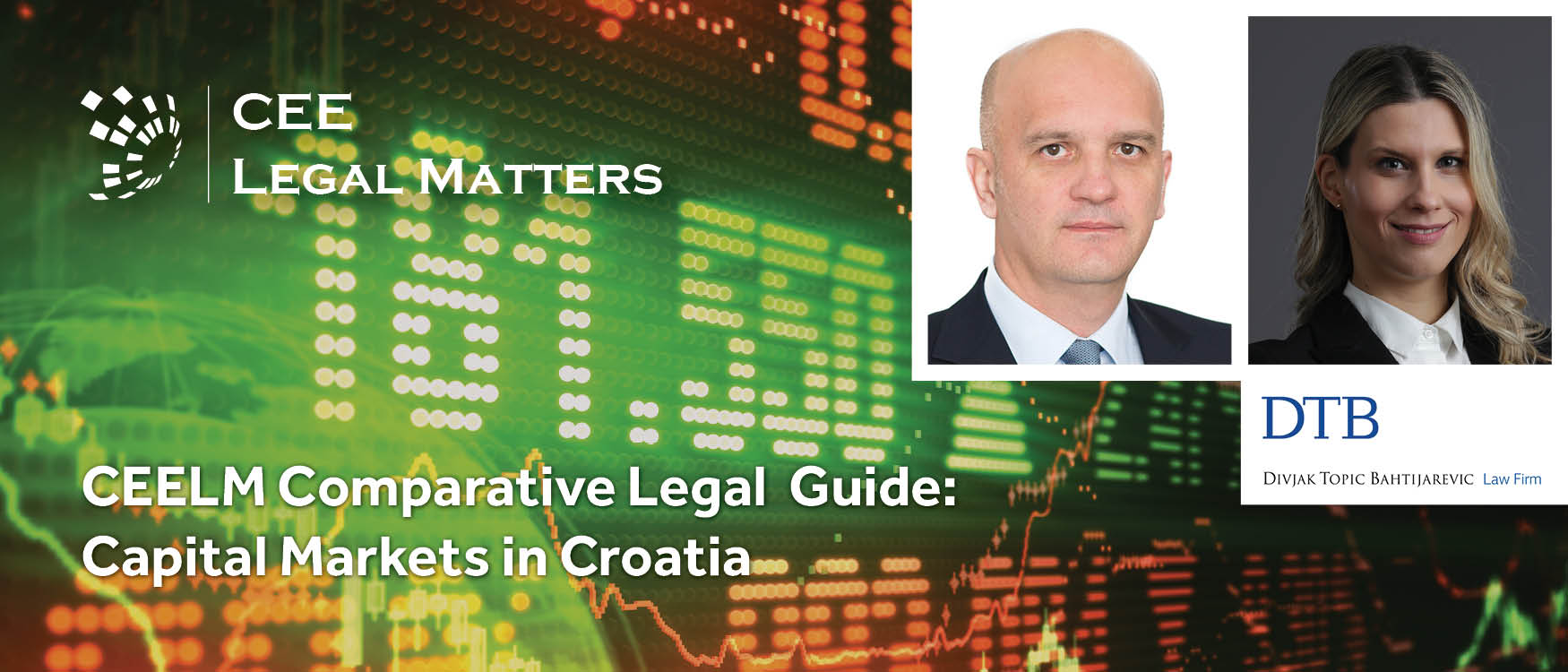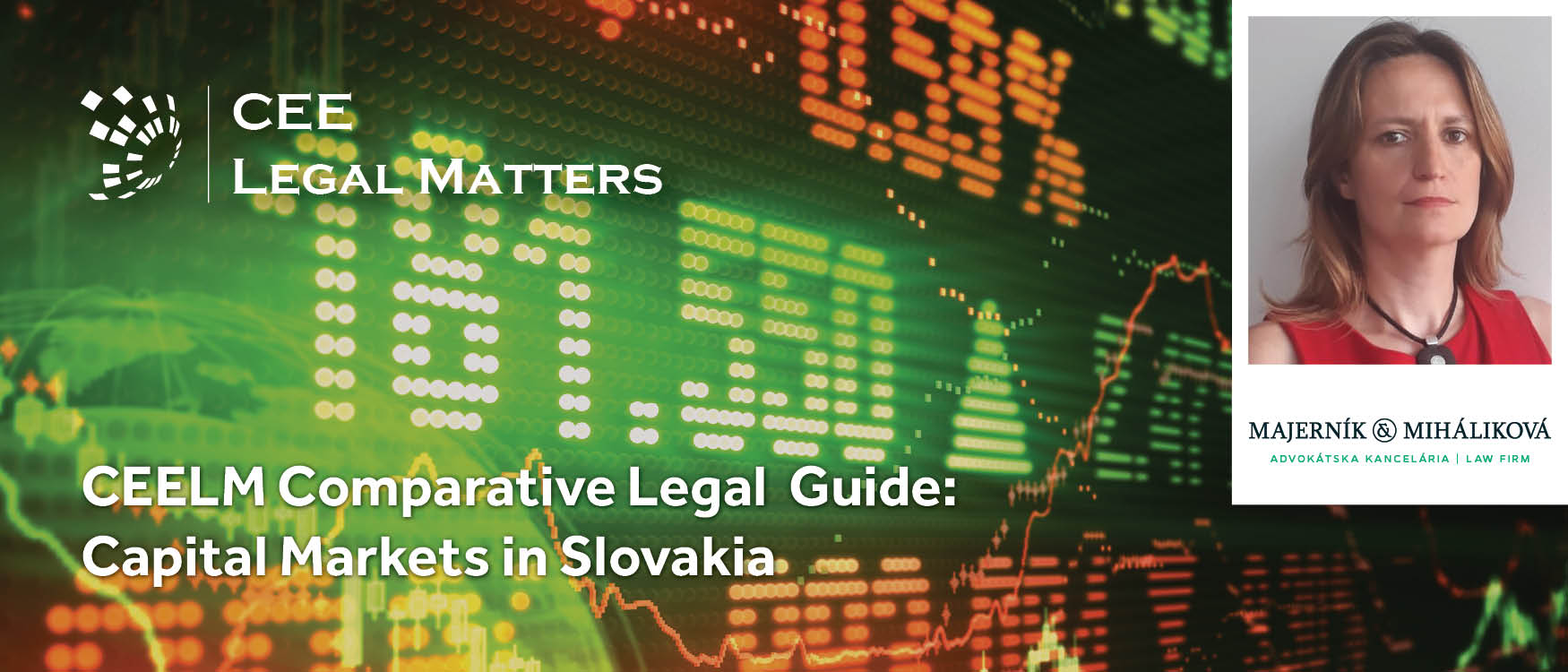Contributed by BBH.
1. Market Overview
1.1. Czech capital market history
As in most of the post-communist countries, the Czech capital market has undergone significant development in the last 30 years, since being created literally from scratch. The Prague Stock Exchange (PSE) was established in 1993 and enabled trading mainly of equity securities and bonds, and other financial instruments to a certain degree. In the same year, a smaller stock exchange, the RM-System, was also founded. The segment was supervised by the Ministry of Finance. Later, as relevant legislation was implemented, supervision of the capital market fell to the Securities Committee (1998-2006). The legislative and regulatory environments gradually became more established while the capital market stabilised (the fundamental legislation in the Czech Republic in this area is the Act on Business Undertakings on the Capital Market (the “Capital Markets Act” or CMA)). In 2006, the Czech National Bank (CNB) became the sole supervisor of the entire financial market. The country’s central bank has acted in that capacity ever since.
As a result of the accession of the Czech Republic into the European Union, Czech capital market legislation was harmonised with European law in all aspects, from licensing procedure, through reporting and transparency obligations, right up to sanctions and penalties.
Throughout this time, the PSE developed and grew in size, but liquidity and traded volumes remained low. The biggest volumes were traded on the PSE in the period between 2001 and 2008. According to the PSE’s 2018 Annual Report, the total volume of share trades reached approximately EUR 5.7 billion in 2018 while bonds trailed at EUR 0.37 billion (compare the figures with the record-breaking EUR 79.5 billion worth of trades in 2001).
On the other hand, the second Czech stock exchange –the RM-System – is focused mainly on small and medium-sized investors. Trading volumes are much lower than at the PSE – in 2018 a mere EUR 0.112 billion.
1.2. Regulatory framework
The Czech capital market has two key regulators who split the regulation and supervision between themselves – the Ministry of Finance and the CNB. While the Ministry of Finance is the penholder and leader in creating the legal framework for the Czech capital market, including the adoption of laws and regulations that transpose EU Directives and Regulations with impact on the capital market, the CNB has the position of the regulator and supervisor.
The legal and regulatory framework of the Czech capital market today is fully harmonised with the EU legislation and compliant with the EU rules, including MiFID II. As mentioned above, the key piece of legislation for the capital markets in the Czech Republic is the CMA. The other laws and regulations relevant for the Czech capital market are the Bonds Act, the Business Corporation Act, Act on Management Companies and Investment Funds, and the Civil Code.
Over the last few years, the market participants have also been required to comply with the requirements of EU regulation EMIR, MAR, MiFID, Benchmark regulation, PRIIPs, SFTR, CSDR and other requirements adopted locally such as central register of contracts (the central evidence of accounts).
In April 2019, changes to the CMA have been introduced, which, among other things, make it easier for issuers, especially from among small and medium-sized enterprises, to enter the capital market. Another objective of the changes is to simplify the conditions for the publishing and approving of prospectuses, which frequent issuers will find especially beneficial.
1.3. Biggest ECM and DCM transactions in recent years
The most notable IPO transactions which took place in the Czech Republic in recent years are the IPO of AVAST in 2018 and GE Money Bank (now Moneta Money Bank) in 2016.
AVAST is a Czech technology firm which actually went public in London and has a dual listing on the PSE.
The IPO of Moneta Money Bank in 2016 was a non-traditional form of solving the situation whereby GE wanted to divest its Czech banking operation, but the M&A process did not lead to finding a suitable purchaser interested in buying the institution under conditions which would be attractive enough for the sellers. GE therefore executed an IPO and gradually reduced its stake, and today Moneta Money Bank is the only bank in the Czech Republic without a majority shareholder, but rather with a truly diversified shareholding structure.
On the debt capital market side the largest offerings are state bond issues and bank mortgage bond issues. Corporate bond issues are usually smaller in volume. Among the most notable in size actually placed in recent years are the SAZKA Group’s EUR 200 million bond issue in 2019, J&T Global’s X EUR 180 million bond issue in 2018, PPF Financial Holdings B.V.’s Tier 2 EUR 160 million bond issue in 2018, and EPH Financing’s CZ EUR 200 million bonds in February 2020, which is currently being placed.
2. Overview of the local stock exchange and listing segments (markets)
As mentioned above, there are currently two main stock exchanges operating in the Czech Republic – the PSE and the RM System. Both operate regulated and non-regulated markets within the meaning of EU legislation.
The PSE is the largest and oldest organizer of the securities market in the Czech Republic. Businesses normally organise their IPOs through agents while trading on the PSE is possible exclusively through brokers who are members of the stock exchange. If a common investor decides to invest in the exchange, he/she needs to contact one of the exchange members.
The PSE closely cooperates with Vienna Stock Exchange as its majority shareholder. At the international level, this cooperation enables joint measures to increase the visibility of both markets and to acquire professional market participants such as data vendors and index licensees, institutional investors and trading participants for the member exchanges. The PSE is a member of the Federation of European Securities Exchanges and has qualified as a designated offshore securities market as determined by US SEC.
The PSE operates the following markets: Prime Market, Standard Market, Free Market and START Market. In addition, bonds may also be traded on the Official Market and Regulated Market of the PSE.
2.1. PSE Prime Market
The Prime Market is a regulated market intended for trading in the largest and most prestigious issues of shares in the Czech and foreign companies.
Companies with shares listed on the Prime Market are subject to higher demands. They must meet the following criteria:
- market capitalization of the issue at EUR 1,000,000
- free-float of 25% at minimum
- issuer’s operation period at least 3 years
2.2. PSE Standard Market
The Standard Market is another regulated market intended for trading in the large and prestigious issues of shares in the Czech and foreign companies. The Standard Market may accept either the issues which meet the demanding statutory requirements of the official securities market or the statutory requirements of the regulated market. The PSE also allows shares to be admitted without the consent of the issuer if they have already been traded on another regulated market in the EU.
Companies with shares traded on the Standard Market must meet the following statutory criteria:
- market capitalization of the issue at EUR 1,000,000
- free-float of 25% at minimum
- issuer’s operation period at least 3 years
2.3. PSE Free Market
The Free Market is a segment of the Multilateral Trading Facility (MTF). Trading on the Free Market is open to investment instruments admitted to trading on the basis of their issuer’s request, as well as investment instruments traded on other global stock exchanges, admitted to trading without the issuer’s consent.
The following types of investment instruments are traded on the Free Market:
- Shares
- Bonds
- ETFs
- Investment certificates
- Warrants
2.4. PSE START Market
START is a non-regulated multilateral trading facility for small innovative businesses valuation of between EUR 1 million to EUR 80 million that want to raise new capital or whose owners want to withdraw partially or completely from the current business to capitalize their existing activities. It was set up in 2018 and the market allows a minimum investment of about EUR 4,000. The advantage of START over other similar markets in Europe is minimal costs for the issuer. The price of new capital is therefore competitive compared to any other form of funding or exit. Below are the requirements and main features of listing on START market:
- CZK 25 million < total value < CZK 2 billion
- Simplified prospectus, Czech accounting standards, independent analysis
- Flexible re-subscription option
To date there are six companies listed on the START market.
2.5. PSE Official Market
The Official Market is a regulated market intended exclusively for trade in the largest and most prestigious bonds issued by the entities coming from the sector of public administration, corporations and financial sector. If they adhere to the statutory rules of the Official Market they must primarily meet the criterion of minimum issue volume of EUR 200 000.
2.6. PSE Regulated Market
The Regulated Market is intended for trade in the major bonds and other debt securities issued by the entities coming from the sector of public administration, corporations and financial sector. The Regulated Market may accept the issues which meet the less demanding statutory requirements of the Regulated Market.
2.7. RM System
The RM System is the smaller of the two exchanges and as such it is primarily focused more on small and medium-investors that are interested in investing on capital markets. Among the largest benefits of trading on the RM System is the large range of stocks and certificates that are traded in Czech Koruna and extended trading period.
The RM System has two markets – the official regulated market and the open market. The official regulated market meets the legal requirements for acceptance on this market according to valid legislation.
Securities traded on the official market must fulfil specific conditions defined by the law regarding business on capital markets, primarily concerning conditions for accepting trades and the obligation towards shareholder disclosure or the obligation to accept take-over bids.
The open market is legally defined as a multi-sided trading system (MOS) with more open conditions for accepting securities without the disclosure and other obligations established by the law regarding business on capital markets.
3. Key Listing Requirements
As the RM System is a considerably smaller exchange than the PSE, the below text will now focus only on the PSE.
3.1. Equity Capital Market
The listing requirements vary depending on the market and the instrument that is being listed. Below is a summary of the listing requirements for equity securities for the different markets.
3.1.1. PSE Prime Market
For admission of shares to trading on the Prime Market (being the most prestigious market of the PSE for trading of shares issued by the Czech and foreign blue chip companies) the following criteria must be met: (i) market capitalization of the issue at EUR 1,000,000, and (ii) free-float of 25% at minimum.
If these conditions are satisfied, the following documents/information must be provided to the PSE in order to have the shares admitted to the trading at the Prime Market:
a) application for admission (in Czech, Slovak, or English);
b) prospectus approved by the Czech National Bank or passported for admission to trading in the Czech Republic (the prospectus is not required if an exception from the obligation to publish the prospectus applies, see Art. 1 (5) of the Regulation (EU) 2017/1129);
c) certification of ISIN allocation or that of similar identification code;
d) signed framework agreement between the issuer and the PSE;
e) confirmation from the Central Depository regarding the registration of the issue;
f) certificate of incorporation in the Commercial Register or similar foreign register;
g) Memorandum of Association or Articles of Association of the issuer, or similar document under the legislation of the issuer’s country of origin; and
h) annual financial statements for the last 3 years (certain limited exemptions may apply).
The Exchange Listing Committee must decide on the admission of an issue within 15 days of the delivery of the respective application.
3.1.2. PSE Standard Market
The same listing requirements also apply to the Standard Market. However, for the Standard Market the decision on admission is made by the PSE CEO, not the Exchange Listing Committee. The CEO must decide on the admission of an issue within 10 days of the delivery of an application.
3.1.3. PSE Free Market
The following documents especially need to be submitted to ensure the successful admission of an investment instrument to the Free Market:
a) an application for admission (in Czech, Slovak, or English)
b) a prospectus or information document,
c) a certificate of allocated ISIN or a similar identification code
d) a signed general agreement between the issuer and the stock exchange (for issues admitted with the issuer’s consent)
e) proof of the registration of the issue by the Central Depository
f) a certificate of incorporation in the Commercial Register or a similar foreign register
g) a Memorandum of Association or Articles of Association of the issuer, or a similar document under the legislation of the issuer’s country of origin
The CEO of the PSE must decide on the admission of an investment instrument within 10 days of the submission of an application.
3.1.4. PSE START Market
The START Market requires that in addition to the above-mentioned general information and documents, the following documents also be submitted:
a) an analysis of the shares prepared by a member of the PSE or an authorized analyst,
b) an affidavit of the issuer with the declaration of the issuer of the fact that the legal due diligence took place and that its results are included to the prospectus, information document or are published as an independent document prior to the commencement of trading of shares on the START Market; the issuer shall specify an authorized legal advisor that conducted the legal due diligence.
The CEO of the PSE must decide on the admission of an investment instrument within 10 days of the submission of an application.
3.2. Debt Capital Market
Bonds (debt securities) issues can be accepted to the Official Market or to the Regulated Market of the PSE.
The Official Market may only accept the issues which meet the statutory requirements of the regulated securities market.
Debt securities may be accepted to the Official Market or Regulated Market if the following documents are submitted:
a) an application for admission (in Czech, Slovak, or English)
b) a prospectus
c) certification of ISIN allocation or that of similar identification code
d) a signed framework agreement between the issuer and the PSE
e) confirmation from the Central Depository of the registration of the issue (for dematerialised securities), or samples of the certificates (for certificated securities), or confirmation of registration of the issue in a similar foreign register
f) a certificate of incorporation in the Commercial Register or similar foreign register
g) financial statements for the last 3 years (in case of the Official Market)
The Exchange CEO must decide on the admission of an issue of bonds within 10 business days of the delivery of an application.
4. Prospectus Disclosure
Securities issued by a company may only be admitted for trading on a Czech regulated market if a prospectus has been drawn up and approved by the Czech National Bank or a foreign competent authority and passported for admission to the regulated market in the Czech Republic.
The contents and other aspects of a prospectus are determined by the Prospectus Regulation and the delegated legislation which includes the Commission Delegated Regulation (EU) 2019/980 (“PR Delegated Regulation”) which sets out the details for the format, content, scrutiny and approval of the prospectus and the Commission Delegated Regulation (EU) 2019/979 (“Prospectus RTS Regulation”) which sets out technical standards on key financial information in the summary of a prospectus, the publication and classification of prospectuses, advertisements for securities, supplements to a prospectus, and the notification portal.
According to the requirements of the Prospectus Regulation a prospectus needs to be written in an easily analysable, concise and comprehensible form and must contain the necessary information on the basis of which an investor may make its informed assessment of the financial position, etc. of the issuer, the rights attaching to the securities being offered and the reasons for the issue and impact on the issuer. Prospectus may be published as a single document or in three separate documents comprising a registration document (containing information relating to the issuer), a securities note (containing information concerning the securities being offered) and a prospectus summary.
The prospectus for listing purposes may be drawn up either in Czech or English language. Prospectus drawn up in another language must be translated. Even in cases of a prospectus in Slovak language (which is due to historical and linguistic proximities very close and often may be used in communication with Czech authorities) a Czech or English translation is required. If a prospectus is drawn up in English, the prospectus must contain a Czech language summary.
Key information that the Prospectus Regulation requires to be included in a prospectus includes:
- risk factors informing potential investors of the material risks to the issuer, its industry and the securities being offered. These should be specific to the issuer or shares or bonds being offered, be grouped into a limited number of categories with the most material factor listed first and, where possible, there should be a quantitative assessment of each risk. The CNB pays extreme attention to this part of the prospectus and reviews and considers all of the risk factors very closely and in detail and also often stresses the requirement for the risk factors to be written in plain and easily understandable language.
- the last three years’ audited financial information prepared in accordance with IFRS or, in the case of a non-EEA issuer, in accordance with national accounting standards where these standards are considered equivalent to IFRS. If a company has been operating for a shorter period of time, subject to certain conditions, the three year’s audited financial information requirement may be exempted;
- details of any significant changes in the financial or trading position of the company since the date of the latest published audited or interim financial information included in the prospectus;
- a working capital statement covering the 12-month period from the date of the prospectus;
- an operating and financial review describing the company’s financial condition, changes in financial condition and results of operations for the periods covered by the historical financial information included in the prospectus;
- summaries of material contracts entered into outside of the ordinary course of business by the company’s group in the past two years (or longer if material obligations or entitlements remain outstanding);
- details of any significant shareholders of the issuer, whose interest is notifiable under the issuer’s national laws;
- details of any related party transactions that the company has entered into during the period covered by the historical financial information and up to the date of the prospectus;
- details of any legal proceedings that the company has been party to in the last year;
- prescribed information on the company’s directors and senior management, including remuneration, benefits and interests in the shares of the company (including share options) and also with respect to the company’s corporate governance; and
- responsibility statements from the company, the directors and any proposed directors, confirming that they accept responsibility for the information contained in the prospectus and that, to the best of their knowledge (having taken all reasonable care to ensure that such is the case), such information is in accordance with the facts and contains no omission likely to affect its import.
The prospective issuers can omit information from a prospectus in limited circumstances where the CNB may authorise that disclosure of such information would be contrary to the public interest, seriously detrimental to the issuer (provided that the omission would not be likely to be misleading the public) or the information is of minor importance in the specific situation and would not influence the assessment of the financial position and prospects of the issuer.
A supplement to the prospectus must be drawn up, approved by the CNB and published if any significant new factor, material mistake or inaccuracy relating to the information included in the original prospectus arises during the period after publication of the original prospectus but before the later of the securities being admitted to trading and the closing of the offer to the public.
At same time in case of the issuance of a supplementary prospectus any investor who had previously agreed to purchase shares in the offering may withdraw from the subscription. This right is exercisable before the end of the second working day after the day on which the supplementary prospectus was published.
5. Prospectus Approval Process
5.1. Competent Regulator
The competent regulator authorised to review and approve prospectuses in the Czech Republic is the CNB. For the purposes of listing the securities on any of the markets of the PSE the company will need to submit a application to the PSE and comply with the relevant listing rules of each particular market.
5.2. Timelime, number of draft submissions, review and approval process
The CNB has 20 business days to approve a submitted prospectus in cases of issuers which have not yet had a prospectus approved by the CNB. In case of issuers which have already had a prospectus approved by the CNB the time period for the CNB to approve the prospectus is reduced to 10 business days and in case of frequent issuers, 5 business days. During the approval process the CNB may raise questions and request additional information to be provided and modifications be made. In case of such a request, the time period for approving the prospectus is extended by the time which it takes until the additional information or amendments are provided to the CNB.
In practice the procedure is however such, that issuers supply a near final draft of the prospectus to the CNB for an informal review and comments. It usually takes the CNB around 7 - 10 days to revert back with its comments. The CNB reviews and assess the prospectus in a very detailed manner and often raises a significant number of questions, comments, requests. In order to have the process as efficient as possible, it is usually helpful to set up a call with the respective CNB team member who is in charge of the review of the prospectus to discuss comments which are not clear or where there is a different point of view to find a reasonable approach which will work for both sides. Once clarified a second draft is submitted to the CNB for informal review and comments. The usual practice is that the CNB reverts back once more with a set of comments and remarks. Usually this time the number of comments is lower. On average there are three to four rounds of CNB comments to the prospectus. Once the prospectus has been so finalised in the course of this informal interaction with the CNB, the issuer and the CNB agree on commencing the formal approval proceedings by the issuer submitting to the CNB a formal request for the approval. In practice this is however just a formality as the contents of the prospectus have already been agreed and preapproved by the CNB during the informal interaction. The formal approval is hence issued within several days of submitting the application for the approval. Overall the whole process with the CNB approval (both the informal and formal parts) usually take from 4 – 8 weeks depending on number of comments, time of year (e.g. during the summer holiday season the CNB response rate is slower) and complexity of the issuer structure or securities to be issued.
6. Listing Process
As mentioned above, the process of listing of securities on any of the PSE markets is quite straight forward. The issuer prepares all documents required for such listing (for more details please see the Listing Requirements chapter above) and then files a formal application to the PSE. Depending on the type of the market the PSE has from 10 to 15 business days to decide whether the securities will be admitted for trading on the respective market.
In practice the PSE is approached by issuers during the early stages of the informal interaction with the CNB, often with a draft of the prospectus being submitted for informal review by the PSE as well. Once the process with the CNB gets closer to finalisation and approval, the issuer discusses the exact timing of submitting the listing application to the PSE so that the formal approval of the prospectus by the CNB is as close as possible to admission of the securities for trading at the given market.
In practice the whole interaction with the PSE takes around 3 weeks, but if well timed, the listing is effected almost simultaneously with the approval of the prospectus, its publication and determination of the issue price.
7. Corporate Governance
Czech law does not prescribe for particular codes that must be complied with by the issuers applying for admission of their shares or other securities to the Prime Market or any other PSE market.
There has been a corporate governance code developed in the Czech Republic and the PSE’s web site draws attention to this. Regardless of this, there is no obligation for any issuer to adopt this in order to have securities listed on a PSE market.
However, if the issuer has adopted a code of corporate governance and management (regardless whether mandatorily or voluntarily), the issuer must inform about this in the application and then also in its periodical reporting to the PSE.
8. Documentation and Other Process Matters
8.1. Over-allotment (greenshoe or brownshoe structure)
An over-allotment relates to the rights of the underwriters to sell additional shares in excess of the originally planned amount of shares in an initial public offering or secondary/follow-on offering.
The underwriters of such an offering may elect to exercise the overallotment option when demand for shares is high and shares are trading above the offering price. This scenario allows the issuing company to raise additional capital.
Other times, the purpose of issuing extra shares is to stabilize the price of the stock and prevent it from going below the offering price. If the stock price drops below the offering price, the underwriters can buy back some of the shares for less than they were sold for, decreasing the supply and hopefully increasing the price. If the stock rises above the offering price, the overallotment agreement allows the underwriters to buy back the excess shares at the offering price, so that they don’t lose money.
There are two types of structures that address the above: (a) greenshoe structure and (b) brownshoe structure, otherwise known as “reverse greenshoe”. A greenshoe structure is when the underwriter has a right to obtain additional shares at the initial offering price from the issuing company, whilst the brownshoe option gives the underwriter the right to sell the shares to the issuer at a later date.
The greenshoe option to acquire additional shares is limited to 15% of the size of the original offering and the option can be exercised within 30 days of the equity offering.
In a brownshoe or “reverse green shoe” option instead of buying shares, the underwriter is allowed to sell the shares back to the issuer, but only if the share price falls below the offering price.
Both options have been used in Czech IPO structures.
8.2. Stock lending agreement
Stock lending is stabilisation technique pursuant to which the stabilisation manager has the right to borrow up to 15% of issued shares from the selling shareholders in secondary offerings. The manager uses these shares to settle any over allotments made in connection to the offer. The stabilisation manager is required to return equivalent shares to the over-allotment shareholder by a specific day as agreed in the stock lending agreement.
8.3. Stabilisation
Stabilisation is a process during which stock is purchased by underwriters to stabilize or support the secondary market price of a security immediately following an IPO. After an IPO, the price of the newly issued shares may falter or be shaky in trading. The terms of the stabilisation are usually agreed in the underwriting agreement. It is important to note that stabilisation may only be used to support the market price of the shares and not to increase the price in excess of the offering.
Under MAR stabilisation is exempted from the prohibition on insider dealing, market manipulation and unlawful disclosure of inside information so long as:
- the undertaking of the stabilisation is for a limited period (in respect of shares the time period is no longer than 30 calendar days whilst in respect of bonds it is no longer than 60 days);
- relevant information is disclosed to the competent authority;
- disclosure is made in the offering documents; and
- the undertaking is in compliance with adequate limits with regard to price.
The European Securities and Markets Authority (“ESMA”) indicated that disclosure obligations will include further requirements, namely that (a) prior to the stabilisation, issuers must disclose where the stabilisation measure may occur (whether it be on or outside a trading venue); and (b) after the stabilisation, issuers must disclose the trading venue on which the stabilisation transactions were carried out.
Both MAR and ESMA recommendations and guidelines are applicable in the Czech Republic.
9. Ongoing Reporting Obligations (Life as a Public Company)
Each issuer of securities which are listed on a regulated market must comply with various ongoing reporting obligations which differ depending on the market on which they are listed and on the type of securities that are listed. Generally speaking, the reporting obligations for companies with listed shares are more extensive than for the companies with listed debt securities or other instruments. In addition, both listed and unlisted companies will need to ensure that they meet the ongoing obligations under MAR.
9.1. Annual Reports
All companies with securities (regardless whether equity or debt) listed on a regulated market are under the obligation to prepare and publish annual audited accounts no later than within 4 months after the end of the financial year.
In addition, the above-mentioned issuers must also publish semi-annual financial accounts within three months of the end of the interim financial period. These accounts do not need to be audited, but where an auditor reviews or audits these accounts, then the audit or review report must also be published.
Where a company is domiciled in the EU, the financial statements must be prepared in accordance with IFRS as adopted by the EU.
9.2. Other reporting obligations
In addition to the financial accounts the issuers of securities listed on Prime market are required to submit to the PSE periodically the following information:
a) calendar regarding the fulfilment of the disclosure obligations, always before the commencement of trading and thereafter, always within 30 days of the beginning of the financial year for that financial year, but always before the publication of the first information from that calendar. The issuer shall keep the calendar updated and shall fulfil its disclosure duties in accordance with the known deadlines. This calendar in particular contains data on the publication of preliminary financial results, the annual report and the semi-annual report, interim report and date of the general meeting.
b) without undue delay preliminary financial results to the extent of selected indicators from the balance sheet and profit/loss statement or to the extent of the complete balance sheet and profit/loss statement if the company compiles them;
c) an annual report and consolidated annual report, no later than 4 months after the end of each fiscal year;
d) a semi-annual report or consolidated half-yearly report, if the issuer is obliged to compile consolidated semi-annual reports, within 3 months following the end of the first 6 months of each fiscal year;
e) companies operating in the mining, timber or forest industries or businesses, must submit a report on remuneration paid to a state no later than 6 months after the end of each fiscal year;
f) without undue delay an interim report or interim financial statements for the first and third quarter of each fiscal year, if made up and published by the issuer,
g) a Declaration on the Code of Corporate Governance that the issuer complies with (if any) in the same form as is a part of the annual report;
h) in addition, any information on the company’s business results and commentary on its financial situation as required by the PSE listing committee;
i) without undue delay information about the convocation of an annual or extraordinary General Meeting, distribution of dividends, the issuance of new shares, the exercising of rights from convertible or priority bonds and the exercising of subscription rights;
j) without undue delay, a draft resolution for an increase or decrease of registered capital;
k) percentage of own shares, but at the latest two trading days after the acquisition or sale, if these shares reach, exceed or fall below the thresholds stipulated by the CMA;
l) without undue delay personnel changes to the board of directors, supervisory board, top management;
m) without undue delay minutes of regular and extraordinary general meetings of the issuer;
n) without undue delay changes to the entry in the Commercial Register involving the issuer;
o) without undue delay all changes to rights relating to the listed shares;
p) without undue delay all information required for the protection of investors or for securing the smooth functioning of the market (e.g. legal and commercial disputes, new patents and licenses, closure or cancellation of new contracts, appointment of a new auditor);
q) without undue delay each change in the rights associated with a particular class of shares or similar securities representing the right to a share in the issuer’s business, also if there are changes made to the rights associated with an investment instrument which the issuer has issued and with which a right is associated to acquire shares issued by the issuer or similar securities representing the right to a share in the issuer’s business;
r) information regarding the shareholder structure, always upon the receipt of an extract from the register of shareholders and the designation of the persons acting in concert;
s) without undue delay information about ownership interest of the issuer in the businesses of other parties;
t) without undue delay notification of the decision of the issuer on the exclusion of the shares concerned from trading on the regulated market, including information about whether and when a public offering for a contract has been made in accordance with the law and the full wording of the public offering.
Reporting obligations of other PSE markets are reduced, but the principle and objectives are the same, i.e., to ensure transparent and timely disclosure in order for the market participants to have full and accurate information for their trading activities.























